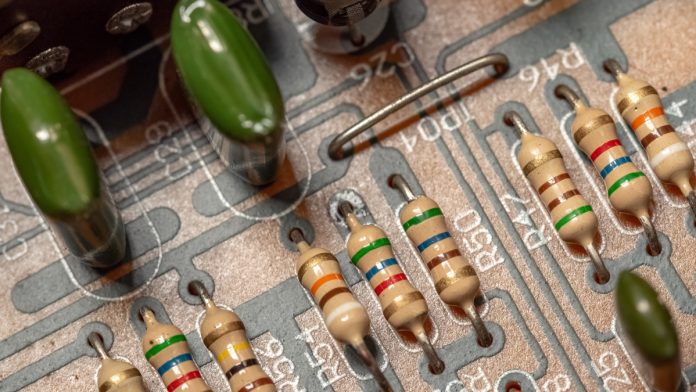Here you will explore various technical aspects and challenges, providing insights into how electron behavior and semiconductor physics shape sound performance. Through detailed examination of the principles and operations underlying electronic audio circuits, we will demystify how design choices impact musical experience. At its core lies The Physics Behind Transistors in Audio Technology, revealing the sophisticated interplay between physics and sound engineering to create dynamic, robust audio systems.
| Table of Contents | |
|---|---|
| I. | Semiconductor Fundamentals and Band Theory |
| II. | Carrier Dynamics and Charge Transport |
| III. | Transistor Operation Modes (Cutoff, Active, Saturation) |
| IV. | Amplification Mechanisms and Signal Integrity |
| V. | Thermal Effects and Noise Contributions |
| VI. | Nonlinearities and Distortion in Audio Circuits |
| VII. | Voltage-Controlled Devices and Field-Effect Transistors (FETs) |
| VIII. | Circuit Design and Biasing Techniques |
| IX. | Temperature Compensation and Stability Engineering |
| X. | Signal Processing and Integrated Circuit Design |
| XI. | Emerging Materials and Advanced Transistor Technologies |
Semiconductor Fundamentals and Band Theory
Semiconductor physics forms the backbone of transistor functionality. Atoms arranged in a crystal lattice create energy bands that dictate electron flow. Electrons transition between the valence and conduction bands when sufficient energy is applied, enabling conductivity. These intrinsic properties are critical for device performance and lay the groundwork for sophisticated audio circuits in modern music systems, ensuring consistent signal behavior and frequency response.
Carrier Dynamics and Charge Transport
Charge carriers, electrons and holes, are central to electronic conduction. Their motion, governed by drift and diffusion mechanisms, dictates the speed and efficiency of a transistor’s response. Fast carrier dynamics enhance audio signal clarity by reducing latency and distortion. In audio technology, managing carrier behavior is paramount for crisp sound reproduction and dynamic performance, ensuring the circuitry handles complex signal modulations with precision.
Transistor Operation Modes (Cutoff, Active, Saturation)
Transistor performance hinges on its operating modes: cutoff (no conduction), active (amplification), and saturation (full conduction). Each mode is meticulously tailored to suit specific signal processing tasks. Selecting the proper mode is essential for optimal audio amplification and processing, ensuring minimal signal loss and distortion. This operational flexibility allows audio circuits to dynamically adjust and maintain sound integrity during varying musical passages.
Amplification Mechanisms and Signal Integrity
Amplification relies on the controlled flow of charge carriers to boost weak audio signals. With precise biasing and feedback, transistors achieve clean, linear amplification vital for studio-quality sound. Here, The Physics Behind Transistors in Audio Technology manifests as engineers balance gain, fidelity, and noise, ensuring that complex audio waveforms retain their original character and dynamic range through every stage of processing.
Thermal Effects and Noise Contributions
As transistors amplify signals, temperature variations and inherent material properties introduce noise. Thermal agitation of charge carriers can disrupt signal clarity, posing challenges in audio circuit design. Effective cooling and sound shielding counteract these effects. Designers implement noise-reduction techniques to maintain pristine audio quality, balancing the thermal behavior of devices to achieve minimal interference while preserving the natural warmth and dynamics of musical performance.
Nonlinearities and Distortion in Audio Circuits
In audio transistors, nonlinearity may induce harmonics and subtle distortion, which can be both undesirable and a creative asset. The delicate balance between smooth operation and controlled nonlinear distortion is fundamental to high-fidelity sound reproduction. Engineers optimize circuit topology to mitigate unwanted artifacts while sometimes harnessing them for characterful, vintage tones, transforming potential flaws into musical expression.
Voltage-Controlled Devices and Field-Effect Transistors (FETs)
Field-Effect Transistors (FETs) offer voltage-controlled performance with high input impedance, ideal for precise audio modulation. Their design minimizes loading on preceding circuits, preserving signal integrity. These devices are favored for their efficiency in low-noise amplification stages, enabling nuanced control over sound dynamics and timbre. Their properties are pivotal in modern mixers and pre-amplifiers, allowing for refined sound shaping in live and studio applications.
Circuit Design and Biasing Techniques
Accurate biasing ensures that transistors operate in desired regions for optimal audio performance. By carefully selecting resistor networks and establishing proper voltage levels, circuit designers achieve stability and linearity in amplification stages. These design techniques reduce distortion and extend dynamic range, directly influencing audio fidelity. Here, precision engineering bridges theoretical physics with practical music production, enhancing the overall sound experience. The Physics Behind Transistors in Audio Technology guides these strategies to achieve robust, consistent performance.
Temperature Compensation and Stability Engineering
Transistor characteristics fluctuate with ambient temperature, impacting reliability. Engineers employ temperature compensation circuits, using components like diodes or thermistors, to stabilize operating points over varying conditions. This deliberate stabilization minimizes drift and maintains consistent audio performance. With intelligent design, these adjustments ensure that sound quality remains unaffected by thermal variations, preserving the clarity and balance essential to professional audio systems.
Signal Processing and Integrated Circuit Design
Modern audio equipment relies on integrated circuits (ICs) that combine multiple transistors for complex signal processing. Innovative IC design enables precise filtering, equalization, and dynamic range control. In doing so, it supports advanced audio applications like digital effects and automated mixing. Leveraging robust semiconductor properties, designers craft circuits that process and amplify signals with high fidelity. The Physics Behind Transistors in Audio Technology is deeply embedded in these circuits, ensuring efficient and reliable sound manipulation.
Emerging Materials and Advanced Transistor Technologies
The future of audio technology is steered by innovation in semiconductor materials and transistor architectures. Emerging materials such as graphene and compound semiconductors promise enhanced electron mobility and reduced power consumption. These advanced technologies could revolutionize audio circuits, offering unprecedented clarity and responsiveness in sound reproduction. As research progresses, the continuous evolution of device physics opens the door to novel designs, pushing the boundaries of what is possible in musical performance and sound engineering while echoing The Physics Behind Transistors in Audio Technology.

